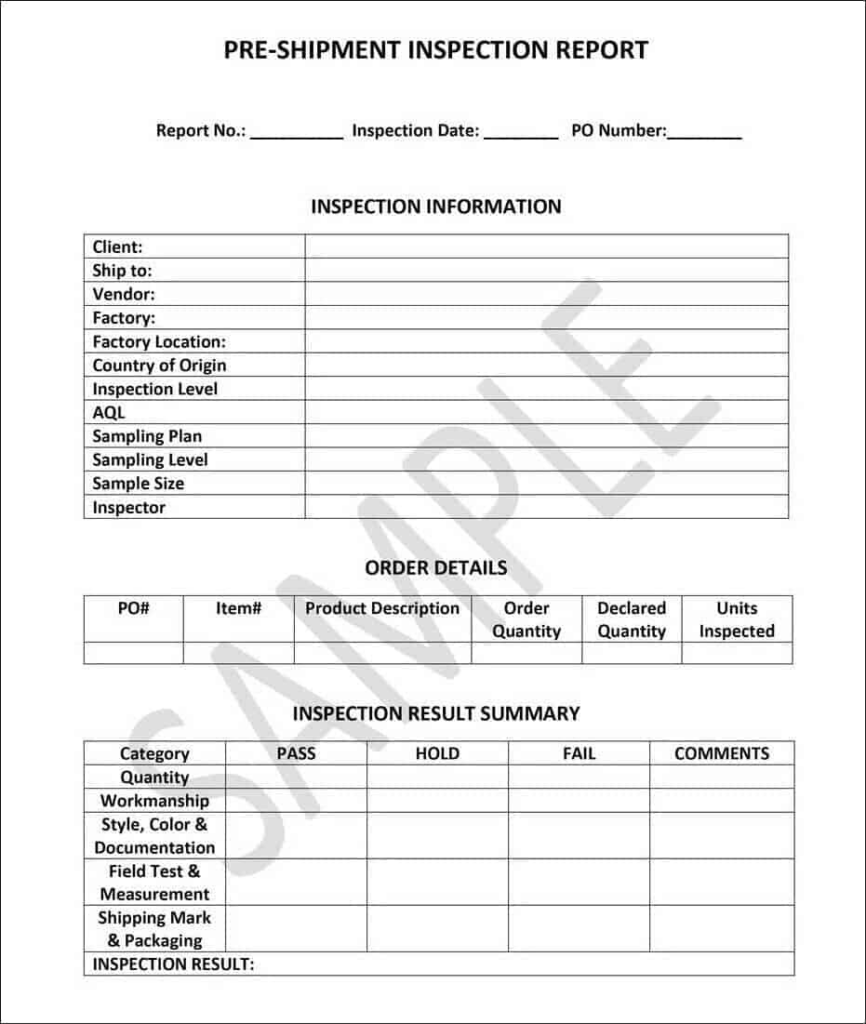- September 30, 2024
- Posted by: admin
- Categories: Export Financing, Blog

In the world of international trade, ensuring that products meet the required standards is essential. One of the key documents that helps achieve this is the Certificate of Inspection (COI). This document confirms that goods have been inspected and meet the necessary quality, quantity, and packaging requirements before they are exported. Let’s explore what a Certificate of Inspection is, its types, benefits, and how to obtain it.
What is a Certificate of Inspection?
A Certificate of Inspection is a trade document issued by a third-party inspection agency after thoroughly examining the goods intended for export. This inspection ensures that the products comply with the agreed-upon terms and conditions outlined in the contract between the exporter and importer. The COI is crucial because it guarantees that the goods are in good condition and meet the standards of the importing country.
Certification Of Inspection Format

Why is a Certificate of Inspection Important?
The Certificate of Inspection serves several critical purposes in international trade:
- Quality Assurance: It ensures that the goods meet the quality standards specified in the contract, protecting the importer from receiving substandard or incorrect products.
- Regulatory Compliance: Some countries have strict regulations that require imported goods to pass certain quality checks. The COI helps meet these regulatory requirements, facilitating smoother customs clearance.
- Risk Mitigation: By verifying that the goods match the contract specifications, the COI reduces the risk of disputes between the buyer and seller, ensuring that the transaction proceeds smoothly.
Benefits of a Certificate of Inspection
Having a Certificate of Inspection offers multiple benefits for both exporters and importers:
- Ensures Contract Compliance: The COI verifies that the goods comply with the contract terms, reducing the chances of receiving products that don’t meet expectations.
- Helps Exporters Monitor Quality: Exporters can use the inspection process to monitor the quality of their goods, making adjustments if necessary before shipping to avoid rejections.
- Supports Timely Shipments: By ensuring that goods meet the required standards before shipping, the COI helps avoid delays at customs, leading to timely delivery of goods.
- Facilitates Compensation Claims: If the importer receives goods that don’t meet the expected quality despite having a positive inspection certificate, they can claim compensation from the inspection agency.
Types of Certificates of Inspection
There are two main types of Certificates of Inspection commonly used in international trade:
Official Inspection Certificate: This type of certificate is often required by customs authorities in the importing country. It verifies that the goods meet all the necessary quality, quantity, and regulatory requirements before they can be cleared for entry.
Commercial Inspection Certificate: The Commercial Inspection Certificate, or report, is typically issued after a pre-shipment inspection. This inspection takes place before the goods leave the factory or warehouse. The importer uses this certificate to verify that the goods comply with the sales agreement and any import regulations before the shipment is dispatched.
Details Included in a Certificate of Inspection
A standard Certificate of Inspection includes several key details about the goods and the inspection process:
- Date of issue
- Date and place of inspection
- Contact details of the applicant
- The country of origin
- The description of the goods
- Number and date of the pro forma invoice
- The insurance policy number
- Number of packages
- The number and date of the bill of lading
- The gross weight
- Port of discharge
- Contact details of the supplier
- The code number of the custom tariff
- Type of packing
- Place of issue
- The name and signature of the authorized person
How to Obtain a Certificate of Inspection
Obtaining a Certificate of Inspection involves several steps, typically coordinated between the exporter, importer, and inspection agency:
Arrange for Inspection: The importer usually arranges the pre-shipment inspection, while the exporter ensures the goods are available for inspection at the origin country.
Documentation: The exporter, often with the help of a freight forwarder, prepares all necessary documents, such as the Letter of Credit, Bill of Lading, and Test Reports, to present to the inspection agency.
Inspection Process: The inspection is carried out by an independent agency. The inspector examines the goods to ensure they meet the required specifications.
Issuance of Certificate: After a successful inspection, the agency issues the Certificate of Inspection, which can be sent to the importer either on the agency’s letterhead or published online.
Countries That Always Need an Inspection Certificate for Shipments
Some countries need an Inspection Certificate for all shipments, no matter how much the shipment is worth. However, most countries usually ask for this certificate only if the shipment is above a certain value.
The countries that always require an Inspection Certificate, no matter the shipment’s value, include Angola, Bangladesh, Benin, Bolivia, Burkina Faso, Burundi, Cambodia, Cameroon, Central African Republic, Comoros, Republic of Congo (Brazzaville), Democratic Republic of Congo (Kinshasa), Cote d’Ivoire, Ecuador, Ethiopia, Ghana, Guinea, India, Indonesia, Iran, Kenya, Kuwait, Liberia, Madagascar, Malawi, Mali, Mauritania, Mexico, Moldova, Mozambique, Niger, Nigeria, Peru, Russia, Rwanda, Saudi Arabia, Senegal, Sierra Leone, Tanzania, Togo, Uzbekistan, Venezuela, Zanzibar, and Zimbabwe.
In some cases, a country might only need an Inspection Certificate for certain types of goods. For example, Mexico requires this certificate for items like shoes, textiles, steel, and bicycles, but only if they don’t qualify for the North American Free Trade Agreement (NAFTA).
Other Documents You Might Need for Inspection
Besides the inspection certificate, there are a few other important documents you might need when exporting goods to make sure everything goes smoothly at customs. These include:
Bill of Lading: The Bill of Lading is a key document in trade that lists the type, quantity, and destination of the goods being shipped. It also serves as a receipt once the goods have safely arrived at their destination.
Insurance Certificate: An Insurance Certificate shows that the goods are insured against loss or damage during transport. It includes all the details about the insurance coverage for the goods.
Import/Export License: The Import License and Export License are documents that prove you have permission to bring goods into or send goods out of a country.
Test Report: A Test Report confirms that the goods have been tested and meet the necessary standards. This ensures that the products comply with safety or quality requirements.
Conclusion
The Certificate of Inspection is a vital document in the export process, ensuring that goods meet the necessary quality, quantity, and packaging requirements before they are shipped. By obtaining this certificate, exporters can build trust with their international partners, minimize the risk of disputes, and ensure that their products comply with the regulations of the importing country. Whether it’s an Official Inspection Certificate required by customs or a Commercial Inspection Certificate for verifying compliance before shipment, having a COI in place is a key step in successful international trade.